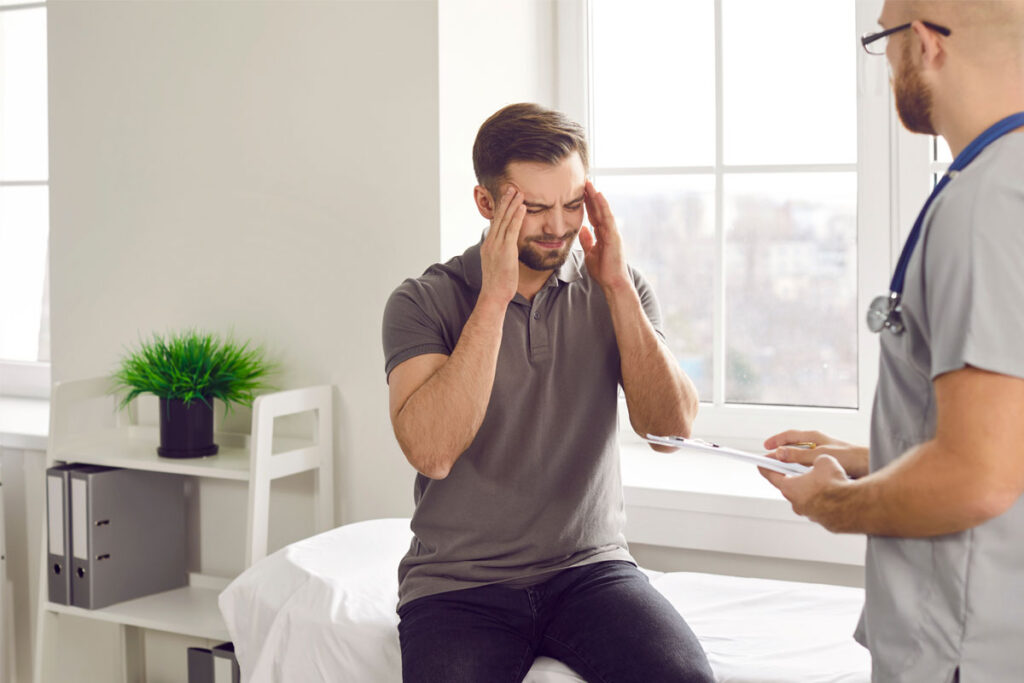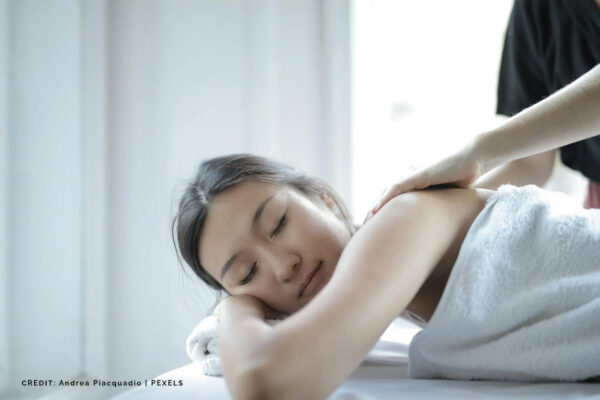Headache Types Explained: Migraine, Tension, Cluster, and More
Headaches are a nearly universal human experience, affecting individuals across all demographics. Statistics Canada data indicates that head pain is a common reason for seeking healthcare advice, highlighting its prevalence within the Canadian population. Understanding that not all headaches manifest identically is crucial for appropriate management and seeking care. Different types of headaches present with unique characteristics, durations, intensities, and accompanying symptoms.
Migraine
Migraine is a severe headache affecting millions of Canadians, affecting daily life, productivity, and overall well-being. It is a complex neurological condition characterized by recurrent episodes, sensory, autonomic, and motor symptoms. Effective management involves identifying triggers, lifestyle adjustments, and medical treatments prescribed by healthcare providers.
Typical Characteristics of a Migraine
- Pain Quality and Location: Migraine pain, characterized by throbbing or pulsating sensations, usually begins unilaterally and can escalate to bilateral, affecting one side of the head and significantly affecting daily activities.
- Associated Symptoms: Migraine headaches often cause nausea and vomiting, with photophobia and phonophobia being common features. Osmophobia, sensitivity to smells, can also be present, leading to restlessness in dark, quiet environments.
- Duration: Migraine attacks, untreated or unsuccessfully treated, last 4 to 72 hours and can vary between individuals. Chronic migraines, lasting over three months, involve 15 or more headaches per month, with at least eight days meeting migraine criteria.
- Aggravation by Physical Activity: Regular physical activities like walking and climbing stairs can worsen migraine pain, causing significant disability compared to tension-type headaches, which are not aggravated by routine activities.
- Potential for Aura: Aura, a transient neurological symptom, affects 25-30% of migraine patients, often accompanied by visual disturbances, sensory tingling, or motor symptoms, and can precede or accompany the headache phase.
Different Phases of a Migraine
- Prodrome Phase: The prodrome phase, occurring hours or days before head pain or aura onset, involves subtle premonitory symptoms like mood changes, fatigue, concentration difficulties, neck stiffness, increased thirst, frequent urination, food cravings, and increased sensitivity to light or sound.
- Aura Phase: Aura phase, experienced by a subset of migraineurs, involves reversible neurological symptoms lasting less than 60 minutes, primarily visual disturbances, but can also include sensory changes or speech difficulties.
- Headache Phase: Migraine’s most common phase involves moderate to severe head pain, often throbbing, and is often accompanied by nausea, vomiting, photophobia, and phonophobia, which can last 4 hours to 3 days untreated.
- Postdrome Phase: After resolving severe headache pain, individuals often experience a postdrome phase, also known as a migraine hangover, lasting 24-48 hours and exhibiting symptoms like fatigue, concentration issues, and mood changes.
Potential Triggers for Migraines
- Stress and Emotional Factors: Migraine attacks can be triggered by acute stress, let-down periods, strong emotions, and consistent stress management techniques, which may be beneficial for some individuals.
- Hormonal Fluctuations: Migraines can be triggered by changes in oestrogen levels, menstruation, ovulation, pregnancy, or menopause, and can be influenced by hormone replacement therapy and oral contraceptives.
- Dietary Factors: Triggers for certain health issues include aged cheeses, processed meats, alcohol, caffeine, chocolate, artificial sweeteners, and MSG. Individual sensitivity varies, and skipped meals and dehydration are also significant factors.
- Sleep Pattern Changes: Migraine can be triggered by insufficient or excessive sleep and maintaining a regular sleep-wake cycle is recommended for migraine management, as is avoiding jet lag and shift work.
- Environmental Stimuli: Migraines can be triggered by sensory inputs like bright lights, loud noises, strong odours, and weather changes, such as changes in barometric pressure.
Tension Headache

Tension-type headache (TTH) is the most common primary headache globally and in Canada, characterized by mild to moderate pain. It is often described as a constant ache or pressure, often resembling a tight band around the head. TTH is not associated with nausea or vomiting and isn’t worsened by physical activity. It can be episodic or chronic, occurring 15 or more days per month. Although less disabling than migraines or cluster headaches, their high frequency can significantly impact quality of life and productivity.
Typical Characteristics of a Tension Headache
- Pain Quality and Location: Tension-type headaches are characterized by a dull, aching sensation or constant pressure, often resembling a tight band wrapped around the head, and are generally non-pulsating in quality.
- Intensity: Tension headache pain is mild to moderate, causing discomfort and distraction but not reaching migraine or cluster headache severity. It doesn’t hinder daily activities, but concentration may be impaired.
- Location: The pain is most commonly bilateral, meaning it affects both sides of the head simultaneously. It often involves the forehead, temples, or the back of the head and neck. The “band-like” distribution across the forehead or encircling the head is a classic description.
- Absence of Associated Symptoms: Tension-type headaches typically do not cause significant nausea or vomiting, and mild sensitivity to light or sound is not experienced concurrently, and the sensitivity is not as severe as in migraines.
- Not Aggravated by Routine Activity: Standard physical activities such as walking, climbing stairs, or bending over do not typically worsen the pain of a tension-type headache. This feature helps differentiate it from migraine, where such activities often lead to an intensification of the headache pain.
Potential Triggers for Tension Headache
- Stress and Mental Tension: Psychological stress, such as increased workload, emotional upset, anxiety, depression, or concentration demands, can trigger tension-type headaches by causing subconscious muscle tightening in the neck, scalp, and jaw.
- Muscle Strain and Poor Posture: Long periods of sitting in awkward positions, such as working without ergonomic support, driving long distances, or sleeping without neck support, can strain pericranial muscles and cause tension headaches.
- Fatigue and Sleep Deprivation: Insufficient sleep, poor sleep quality, or general fatigue can lower the threshold for developing tension headaches. Disruptions to the regular sleep schedule or chronic sleep deficits are frequently associated with an increased frequency or intensity of these headaches.
- Eye Strain: Uncorrected vision problems or prolonged periods focusing on screens or detailed tasks without breaks can lead to eye strain, which in turn may trigger tension-type headaches. Ensuring appropriate vision correction and taking regular screen breaks can help mitigate this trigger.
- Dehydration and Missed Meals: Inadequate fluid intake leading to dehydration can contribute to the development of headaches, including tension-type. Similarly, skipping meals can cause fluctuations in blood sugar levels, which may act as a trigger for some individuals prone to these headaches.
Cluster Headache
Cluster headache is a rare, severe primary headache disorder with a distinct cyclical pattern and intense pain. It belongs to the group of headaches called trigeminal autonomic cephalalgias (TACs). Clusters of headaches, lasting weeks or months, are separated by remission periods lasting months or years. During these periods, individuals experience frequent, short-lived unilateral pain attacks, usually around the eye or temple. The pain is described as one of the most severe known, often causing agitation and restlessness.
Typical Characteristics of a Cluster Headache
- Pain Quality and Location: The severe pain, often sharp, boring, stabbing, or burning, is unilateral and primarily affects the same side of the head during a cluster period, usually localized in orbital, supraorbital, or temporal areas.
- Intensity and Restlessness: Cluster headache pain, a severe type of pain, can reach maximum intensity quickly and is often characterized by restlessness, agitation, and physical symptoms such as pacing, rocking, or banging of the head.
- Attack Frequency and Duration: Attacks are short-lived, lasting 15-3 hours, and occur frequently during a cluster period, ranging from one every other day to eight per day, often waking individuals from sleep.
- Associated Autonomic Symptoms: Attacks often involve prominent cranial autonomic symptoms on the same side as the pain, such as conjunctival injection, tearing, nasal congestion, sweating, miosis, ptosis, and eyelid oedema, which can cause swelling.
- Cyclical Pattern (Clusters): Headaches are characterized by episodes lasting weeks to months, followed by periods of remission, which can last months or years. Chronic cluster headaches are diagnosed when attacks persist for over a year without remission or less than a month.
Other Types of Headaches
- Sinus Headache: Acute sinusitis is characterized by pain and pressure over the sinuses, often accompanied by symptoms like nasal discharge, congestion, facial swelling, and fever. True sinus headaches are less common than migraine or tension headaches, causing similar facial pain.
- Medication-Overuse Headache (MOH): This condition arises from prolonged use of medication for acute headaches, often resembling tension-type or migraine headaches. It worsens as medication usage continues, and treatment involves withdrawal from overused medications.
- Post-Traumatic Headache (PTH): Head injury or trauma can cause a headache, resembling migraines or tension-type headaches. It can be acute or persistent, resolving within 3 months or longer, with common associated symptoms like dizziness or concentration difficulties.
- Primary Exertional Headache: Strenuous physical activity triggers bilateral, pulsating headaches, often bilateral and short-lived. It’s crucial to identify underlying structural causes, especially for new-onset exertional headaches, as it can sometimes last longer.
- Hypnic Headache: A rare headache disorder, primarily affecting older adults, occurs during sleep, waking at a consistent time each night. The pain is dull, bilateral, and lasts from 15 minutes to several hours, possibly due to sleep stages or circadian rhythm disruption.
When to Seek Professional Help

- Sudden, Severe Onset (“Thunderclap”): A headache with intense intensity within seconds to a minute, often referred to as the “worst headache of your life,” necessitates immediate medical evaluation due to potential underlying conditions like subarachnoid haemorrhage or other vascular events.
- Headache with Neurological Symptoms: A headache with neurological signs like numbness, difficulty speaking, confusion, balance loss, vision changes, or seizures requires immediate medical assessment to rule out stroke, tumour, or other neurological emergencies.
- Headache with Fever and Stiff Neck: A headache, fever, and neck stiffness are symptoms of meningitis or encephalitis, indicating brain inflammation. This is a medical emergency requiring prompt diagnosis and treatment.
- Headache Following Head Injury: A healthcare professional should evaluate any significant headache after a fall, blow to the head, or other trauma to rule out potential causes like concussion, skull fracture, or intracranial bleeding.
- New Headache Pattern, Especially After Age 50: New or significant changes in headache patterns or severity, especially in individuals over 50, necessitate medical investigation, as conditions like giant cell arteritis become more prevalent with age.
- Worsening Headache Over Days or Weeks: A headache that progressively worsens in frequency or intensity over time, or one that consistently wakes you from sleep, should be assessed by a doctor to identify any potential underlying cause that might require specific treatment.
- Headache Triggered by Coughing, Straining, or Bending: Headaches triggered by increased intracranial pressure should prompt medical evaluation to rule out structural abnormalities like Chiari malformation or intracranial hypotension/hypertension.
If you are experiencing frequent or severe headaches that impact your daily life, seeking professional medical advice is essential for proper diagnosis and management. For individuals in the Greater Toronto Area and surrounding regions seeking support and rehabilitation services related to pain conditions, including complex headaches, consider contacting PARC Ontario.
We offer specialized programmes and can be reached at our various locations: (416) 445-2075 or (416) 430-0314 [Scarborough], (905) 897-2092 [Mississauga], (905) 686-9081 [Ajax], (905) 430-2112 [Whitby], and (905) 579-9938 [Oshawa].





